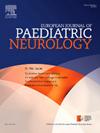The first experience with 16 open microsurgical fetal surgeries for myelomeningocele in Germany
IF 2.3
3区 医学
Q3 CLINICAL NEUROLOGY
引用次数: 0
Abstract
Introduction
Fetal surgery for spina bifida aperta has achieved great advancement in last decade offering three possible methods for surgical repair. Open fetal microsurgical repair still remains the gold standard considering long-term results available. Since 2016, we established a program offering this modality of treatment in Germany.
Patients and methods
All patients who underwent interdisciplinary prenatal evaluation following a standardized protocol between June 2016–June 2024. Sacral lesions were excluded. The surgical technique and protocol used were similar to that described in Management Of Myelomeningocele Study (MOMS).
Results
Sixteen patients underwent surgery for spina bifida aperta without fetal nor maternal deaths. Microsurgical fetal repair was performed between 24th and 25th week of gestation age (GA) (Mean: 24 + 5 weeks GA). Lesion levels were mainly lumbosacral (n = 15) and one thoracolumbar (n = 1). Repair was successful in all 16 cases and with reversible hindbrain herniation at time of birth in 13/16 patients (81.3 %). Average time of delivery was 33 + 5 weeks GA, with 8 preterm deliveries occurring before 37 weeks GA; average birth weight was 2193 g. Maternal complications included 2 patients with uterine scar thinning. Hydrocephalus management was needed in 5/16 patiens (31.25 %) via ventriculo-peritoneal shunting.
Conclusion
Open fetal repair of spina bifida aperta in selected fetuses is safe and offers the unborn child a better quality of life but does not cure the disease and is not without risks or complications. Collaboration within the pediatric community is recommended to compile data in a common registry to develop standardized treatment and follow-up protocols.
德国16例开放性显微手术治疗脊髓脊膜膨出的首例经验
前言胎儿手术治疗先天性脊柱裂在过去十年中取得了很大的进步,提供了三种可能的手术修复方法。考虑到长期疗效,开放式胎儿显微手术修复仍然是金标准。自2016年以来,我们在德国建立了一个提供这种治疗方式的项目。患者和方法所有患者在2016年6月至2024年6月期间按照标准化方案进行了跨学科产前评估。排除骶骨病变。所使用的手术技术和方案与髓脊膜膨出研究(mom)中描述的相似。结果16例手术治疗的aperida患者无胎、母死亡。显微手术胎儿修复于24 ~ 25周胎龄(平均24 + 5周胎龄)。病变部位主要为腰骶部(15例)和胸腰椎(1例)。16例患者均成功修复,13/16例(81.3%)患者出生时出现可逆性后脑疝。平均分娩时间为33 + 5周,37周前有8例早产;平均出生体重为2193克。产妇并发症包括2例子宫瘢痕变薄。5/16(31.25%)患者需要脑室-腹膜分流术治疗脑积水。结论开放式胎儿修复术对部分胎儿是安全的,可提高胎儿的生活质量,但不能完全治愈该病,也存在一定的风险和并发症。建议在儿科社区内进行合作,将数据汇编到一个共同的登记处,以制定标准化的治疗和随访方案。
本文章由计算机程序翻译,如有差异,请以英文原文为准。
求助全文
约1分钟内获得全文
求助全文
来源期刊
CiteScore
6.30
自引率
3.20%
发文量
115
审稿时长
81 days
期刊介绍:
The European Journal of Paediatric Neurology is the Official Journal of the European Paediatric Neurology Society, successor to the long-established European Federation of Child Neurology Societies.
Under the guidance of a prestigious International editorial board, this multi-disciplinary journal publishes exciting clinical and experimental research in this rapidly expanding field. High quality papers written by leading experts encompass all the major diseases including epilepsy, movement disorders, neuromuscular disorders, neurodegenerative disorders and intellectual disability.
Other exciting highlights include articles on brain imaging and neonatal neurology, and the publication of regularly updated tables relating to the main groups of disorders.

 求助内容:
求助内容: 应助结果提醒方式:
应助结果提醒方式:


